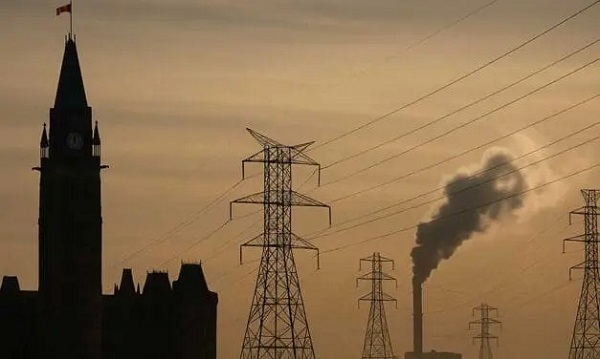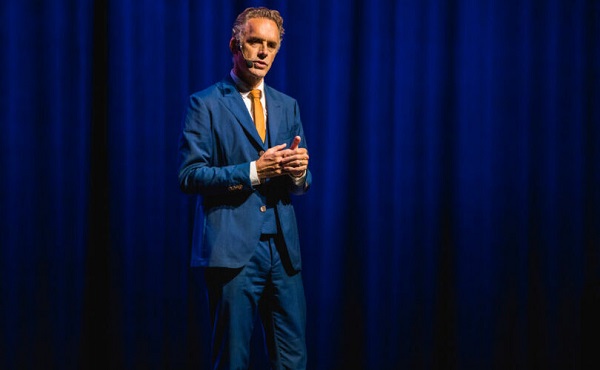Energy
Halfway Between Kyoto and 2050: Zero Carbon Is a Highly Unlikely Outcome

From the Fraser Institute
By Vaclav Smil
The global goal to achieve “net-zero” carbon emissions by 2050 is impractical and unrealistic, finds a new study published today by the Fraser Institute, an independent, non-partisan Canadian public policy think-tank.
“The plan to eliminate fossil fuels and achieve a net-zero economy faces formidable economic, political and practical challenges,” said Vaclav Smil, professor emeritus at the University of Manitoba and author of Halfway Between Kyoto and 2050: Zero Carbon Is a Highly Unlikely Outcome.
Canada is now also committed to this goal. In 2021, the federal government passed legislation mandating that the country will achieve “net-zero” emissions—that is, will either emit no greenhouse gas emissions or offset its emissions through other activities (e.g. tree planting)—by 2050.
Yet, despite international agreements and significant spending and regulations by governments worldwide, global dependence on fossil fuels has steadily increased over the past three decades. By 2023, global fossil fuel consumption was 55 per cent higher than in 1997 (when the Kyoto Protocol was adopted). And the share of fossil fuels in global energy consumption has only slightly decreased, dropping from 86 per cent in 1997 to 82 per cent in 2022 (the latest year of complete production data).
Widespread adoption of electric vehicles—also a key component of Ottawa’s net-zero plan—by 2040 will require more than 40 times more lithium and up to 25 times more cobalt, nickel and graphite worldwide (compared to 2020 levels). There are serious questions about the ability to achieve such increases in mineral and metal production.
Although the eventual cost of global decarbonization cannot be reliably quantified, achieving zero carbon by 2050 would require spending substantially higher than for any previous long-term peacetime commitments. Moreover, high-income countries (including Canada) are also expected to finance new energy infrastructure in low-income economies, further raising their decarbonization burdens.
Finally, achieving net-zero requires extensive and sustained global cooperation among countries—including China and India—that have varied levels of commitment to decarbonization.
“Policymakers must face reality—while ending our reliance on fossil fuels may be a desirable long-term goal, it cannot be accomplished quickly or inexpensively,” said Elmira Aliakbari, director of natural resource studies at the Fraser Institute.

Summary
- This essay evaluates past carbon emission reduction and the feasibility of eliminating fossil fuels to achieve net-zero carbon by 2050.
- Despite international agreements, government spending and regulations, and technological advancements, global fossil fuel consumption surged by 55 percent between 1997 and 2023. And the share of fossil fuels in global energy consumption has only decreased from nearly 86 percent in 1997 to approximately 82 percent in 2022.
- The first global energy transition, from traditional biomass fuels such as wood and charcoal to fossil fuels, started more than two centuries ago and unfolded gradually. That transition remains incomplete, as billions of people still rely on traditional biomass energies for cooking and heating.
- The scale of today’s energy transition requires approximately 700 exajoules of new non-carbon energies by 2050, which needs about 38,000 projects the size of BC’s Site C or 39,000 equivalents of Muskrat Falls.
- Converting energy-intensive processes (e.g., iron smelting, cement, and plastics) to non-fossil alternatives requires solutions not yet available for largescale use.
- The energy transition imposes unprecedented demands for minerals including copper and lithium, which require substantial time to locate and develop mines.
- To achieve net-zero carbon, affluent countries will incur costs of at least 20 percent of their annual GDP.
- While global cooperation is essential to achieve decarbonization by 2050, major emitters such as the United States, China, and Russia have conflicting interests.
- To eliminate carbon emissions by 2050, governments face unprecedented technical, economic and political challenges, making rapid and inexpensive transition impossible.
Author:
Energy
Who put the energy illiterate in charge?

This article supplied by Troy Media.
Canada’s energy policy is being shaped by politicians who don’t actually understand how energy works. That’s not just embarrassing. It’s dangerous
Canada’s energy future is being held back by a critical obstacle: our elected officials don’t understand energy.
At all three levels of government, most politicians lack even a basic grasp of how our energy systems function. That ignorance isn’t just a knowledge gap—it’s a leadership crisis. Energy systems are evolving rapidly, and our leaders are ill-equipped to manage the complexity, tradeoffs and consequences involved. With few exceptions, their understanding is superficial, shaped more by talking points than substance.
By “energy systems,” I mean the complex web of technologies, infrastructure, markets and regulations that generate, distribute and manage power—from oil and gas to hydro, nuclear, wind and solar. These systems are deeply interconnected, constantly changing and central to every aspect of modern life. Yet the people making decisions about them often have little idea how they actually work.
This shows up frequently in public life: dodged questions, scripted answers, vague platitudes. Many politicians skate across the surface of issues with the thinnest understanding. The old adage “a little knowledge is a dangerous thing” perfectly describes Canadian energy politics today.
Decisions about energy directly affect household utility bills, climate goals, industrial competitiveness and grid reliability. Yet politicians tend to be tethered to the dominant energy source in their own region—oil and gas in Alberta, hydro in Quebec, nuclear in Ontario—without grasping how those systems connect or conflict. Canada’s energy landscape is fragmented, with each province operating under its own regulatory framework, infrastructure constraints and political pressures. That makes coordination difficult and systems-level thinking essential.
This isn’t a left-versus-right issue. It’s not oil and gas versus renewables. It’s a national failure to understand the integrated systems that power our lives and economy. Canada is, functionally, energy illiterate, and our elected officials reflect that reality. We flip a switch, pump gas, turn up the thermostat and rarely ask how or why it works, or what it costs in environmental or economic terms.
Take the Clean Electricity Regulations as one example. Introduced by the federal government to drive Canada’s electricity grid to net-zero emissions by 2035, the CERs require provinces to sharply reduce or eliminate fossil fuel-based power. But in Alberta and Saskatchewan, where coal and natural gas still dominate, those regulations landed with a thud. The federal government failed to account for regional infrastructure limitations, market structure
differences and technology readiness. The result? Immediate backlash, legal threats and political gridlock—not because climate action is unwelcome, but because the policy was crafted in a vacuum of systems-level understanding.
Adding to the problem is the dominance of bureaucrats and political handlers in shaping what passes for energy messaging. Speeches are often a patchwork of statistics and sanitized clichés, stripped of nuance or depth. Many politicians simply deliver what they’re handed, guided more by risk management than insight. The result is policy that’s disconnected from the realities it aims to change.
A handful of elected officials do have real-world energy experience, but even that is often narrow, based on one role or one sector. It rarely translates into the kind of broad, integrated knowledge needed to lead across multiple interdependent systems. The risks of this fragmented thinking are immense.
What’s needed is mandatory education—an energy information and insights toolkit for anyone seeking public office. This shared curriculum would cover how electricity and fuel systems work, the economics of energy markets, climate dynamics, environmental trade-offs and public policy principles. It should be grounded in both natural and social sciences and structured to develop systems thinking, so that decisions are informed by how energy technologies, markets and governance truly interact.
Imagine if thousands of politicians—urban and rural, left and right, federal and local—learned from the same textbook. Politics wouldn’t vanish. Disagreements wouldn’t disappear. But the debate would shift from tribal talking points to informed discussion.
And for once, Canada might start moving forward on energy, not with noise or paralysis, but with purpose.
Bill Whitelaw is a director and advisor to many industry boards, including the Canadian Society for Evolving Energy, which he chairs. He speaks and comments frequently on the subjects of social licence, innovation and technology, and energy supply networks.
Troy Media empowers Canadian community news outlets by providing independent, insightful analysis and commentary. Our mission is to support local media in helping Canadians stay informed and engaged by delivering reliable content that strengthens community connections and deepens understanding across the country.
Daily Caller
Unanimous Supreme Court Ruling Inspires Hope For Future Energy Project Permitting


From the Daily Caller News Foundation
It comes as a surprise to many Americans when they learn that the vast majority of decisions issued by the U.S. Supreme Court are decided unanimously. Far too often, these unanimous decisions receive scant attention in the press due to their lack of controversy.
Such is the case with a key 8-0 decision the Court published May 29 that could help Congress and the Trump administration meet their goals to streamline permitting for energy projects in the United States. The decision narrows the scope of application of the National Environmental Policy Act (NEPA), a law whose environmental review provisions have been systematically used – and often abused – by climate alarm groups and plaintiff lawyers for decades to impede the progress of major projects of all kinds.
The case at hand involves the Uinta Basin Railway Project, which will transport oil produced in Utah’s Unita Basin and connect it to the national railway network so it can reach national markets. Because the rail line would parallel the Colorado River for roughly 100 miles, the D.C. Court of Appeals ruled in 2023 that the project’s developers would have to conduct a second, expanded environmental impact study under NEPA to try to assess nebulous potential impacts to air quality – often taking place thousands of miles away – or from a possible oil spill, rescinding a key permit that had been issued in 2021 by federal regulators.
Dear Readers:
As a nonprofit, we are dependent on the generosity of our readers.
Please consider making a small donation of any amount here.
Thank you!
It is key to note that that permit was issued by the federal Surface Transportation Board (STB) along with a 3,600-page environmental impact statement to comply with NEPA. In the conduct of the environmental review, the Wall Street Journal wrote that STB and the company assessed “the railway’s potential effects on local water resources, air quality, protected species, recreation, local economies, the Ute Indian tribe and much more.”
But for the plaintiffs and the D.C. Circuit Court, 3,600 pages of thorough scientific analysis just weren’t enough. They filed suit, complaining that the study didn’t try to assess potential impacts that might happen on dozens of other rail lines hundreds of miles distant, or, even more absurd, assess potential pollution in “environmental justice communities” as far away as the Texas and Louisiana Gulf Coast.
You really can’t make this stuff up.
If delay was the goal, the plaintiffs got a win, halting progress for four years. That is a sadly typical outcome for cases involving energy-related projects such as this one.
In their unanimous opinion written by Justice Brett Kavanaugh, the justices state, “The goal of the law is to inform agency decisionmaking, not to paralyze it.”
As I’ve written in previous stories, the vast majority of delays in permitting processes stem from provisions contained in major federal statutes designed to protect the environment and endangered species. In addition to NEPA, these laws include the Clean Air Act, the Clean Water Act and the Endangered Species Act. Among them all, none has been more broadly abused and misinterpreted by activist courts than NEPA.
In its analysis of the decision, the Institute for Energy Research says, in part, that the “decision means that agencies can approve projects like pipelines, railways, and dams and not be mandated to consider distant environmental effects of the projects, such as increased greenhouse gas emissions, that had stopped or delayed fossil fuel projects from moving forward, particularly during the Biden administration.” But, the author cautions, “the Uinta Basin Railway project could still face additional legal and regulatory hurdles within Colorado,” despite the ruling.
The good news is that even the liberal justices on the Supreme Court appear to be developing a growing awareness of just how absurd some of the claims made in lawsuits like this case really are. The unanimous nature of this decision inspires some sense of hope that the Trump administration can succeed in some of its efforts to reform the system and put an end to some of the most unjustified delays.
David Blackmon is an energy writer and consultant based in Texas. He spent 40 years in the oil and gas business, where he specialized in public policy and communications.
-

 Alberta2 days ago
Alberta2 days agoCentral Alberta MP resigns to give Conservative leader Pierre Poilievre a chance to regain a seat in Parliament
-

 Alberta2 days ago
Alberta2 days agoAlberta health care blockbuster: Province eliminating AHS Health Zones in favour of local decision-making!
-

 Alberta1 day ago
Alberta1 day agoCalls for a new pipeline to the coast are only getting louder
-

 Alberta24 hours ago
Alberta24 hours agoUnified message for Ottawa: Premier Danielle Smith and Premier Scott Moe call for change to federal policies
-

 Alberta2 days ago
Alberta2 days agoAlberta pro-life group says health officials admit many babies are left to die after failed abortions
-

 Daily Caller2 days ago
Daily Caller2 days ago‘Not Held Hostage Anymore’: Economist Explains How America Benefits If Trump Gets Oil And Gas Expansion
-

 Daily Caller8 hours ago
Daily Caller8 hours agoUnanimous Supreme Court Ruling Inspires Hope For Future Energy Project Permitting
-

 Censorship Industrial Complex1 day ago
Censorship Industrial Complex1 day agoJordan Peterson reveals DEI ‘expert’ serving as his ‘re-education coach’ for opposing LGBT agenda



